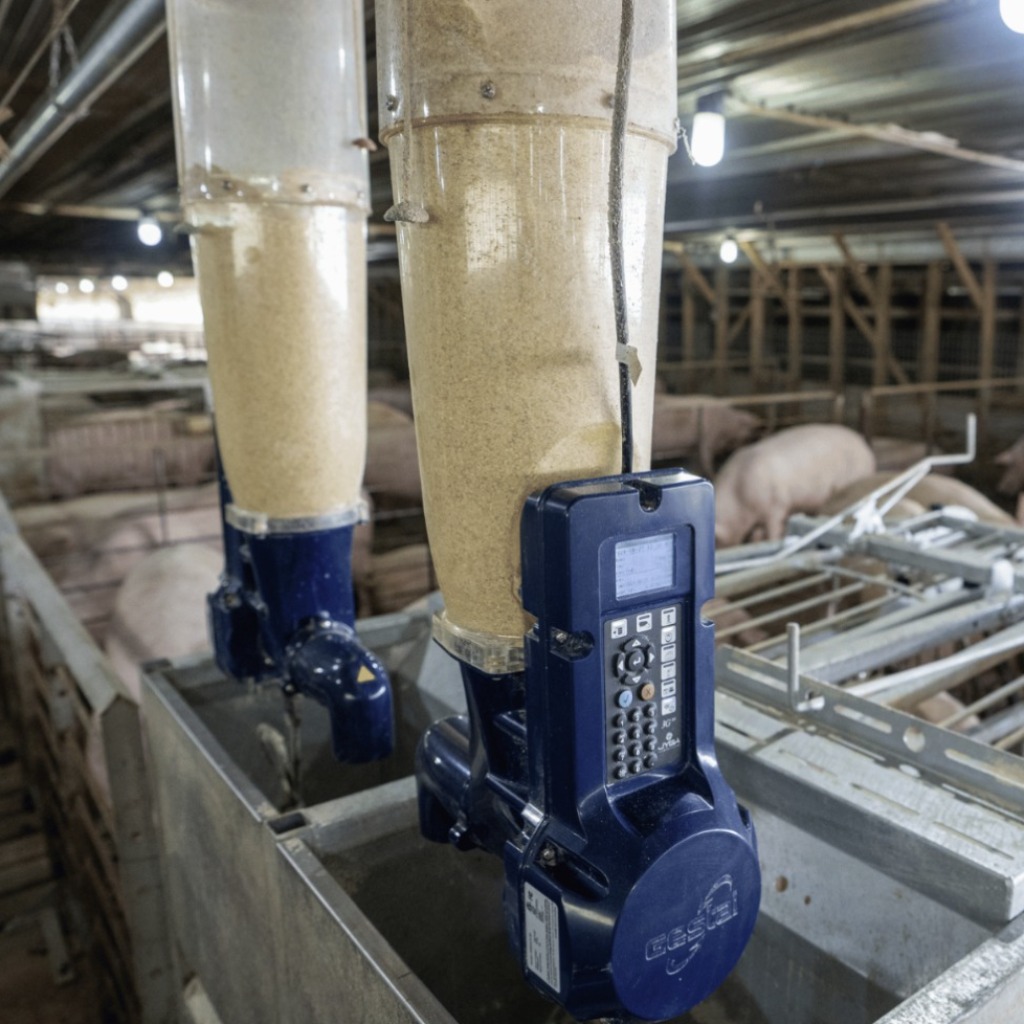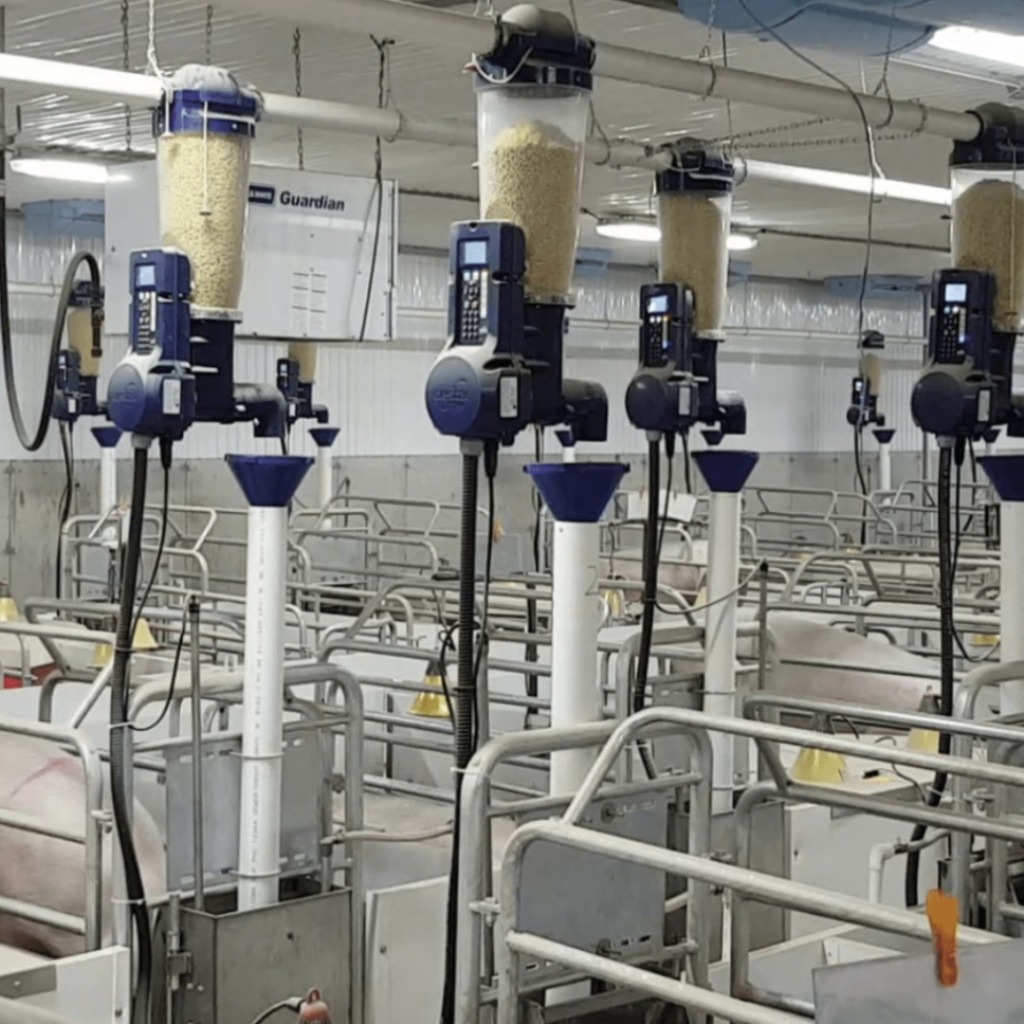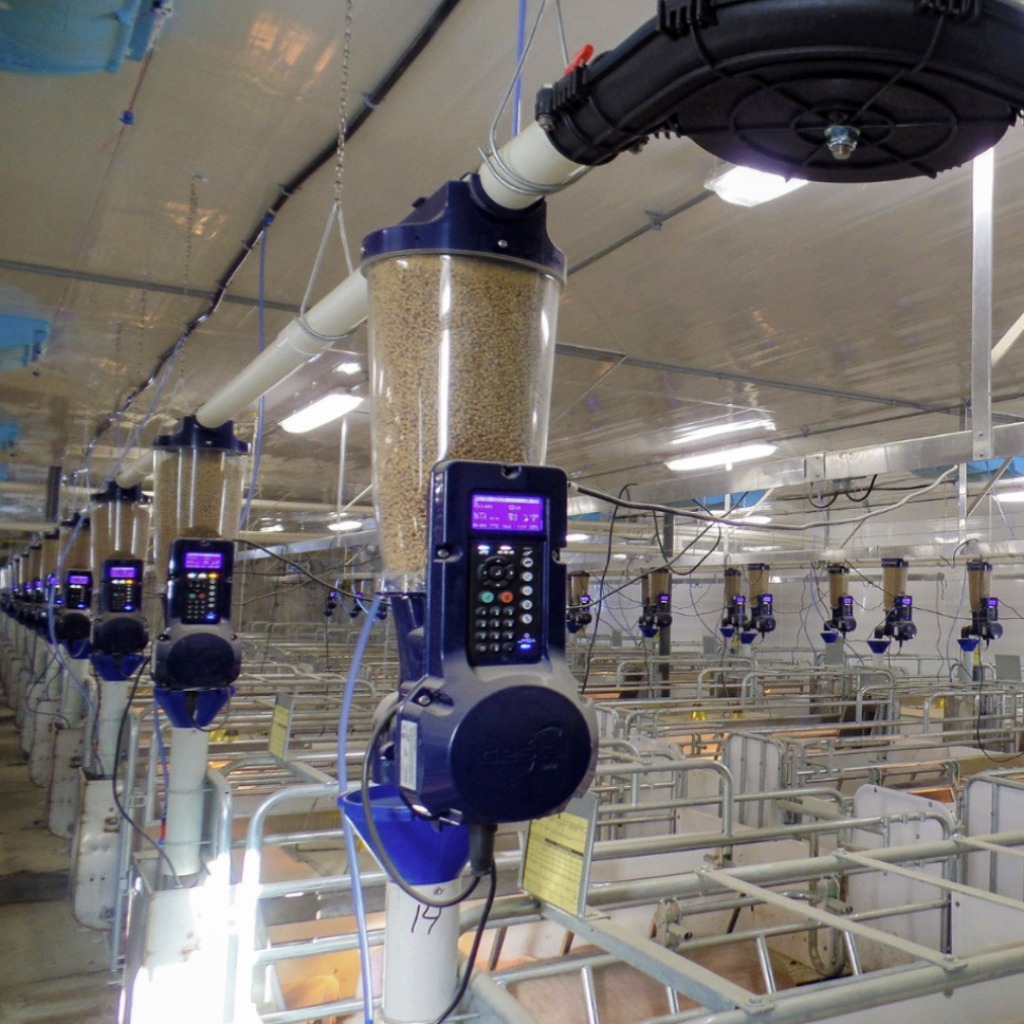Feeding the Future: Why Precision Gilt Nutrition is the Foundation of Sow Farm Success
By Dalton Obermier, PhD, Farm Research Specialist at Jyga Technologies
In modern sow farms, the building blocks for success need to be put in place long before a sow weans her first litter and arguably even before a gilt enters the breeding herd. The nutritional strategy used during the gilt development phase plays a pivotal role in determining her lifetime productivity, longevity, and reproductive efficiency. Feeding gilts accurately and appropriately is no longer just a recommendation; it’s a necessity for sustainable, high-performing swine operations.
This article explores the opportunities and practical considerations involved in implementing a targeted gilt feeding program, highlighting how early nutritional investments can translate into long-term economic, reproductive, and welfare benefits. It also examines how technological advances are allowing producers to address this matter more efficiently and effectively.
By prioritizing the right feeding strategies for gilts today, we lay the foundation for a healthier, more productive, and more profitable herd tomorrow.
Traditional GDU Management: Uniform Feeding, Uneven Outcomes
Gilt development is one of the most influential stages in a sow’s life, and nutrition plays a central role in shaping her long-term productivity.
Nutritional Goals in GDUs
Traditionally, gilts are housed in gilt development units (GDUs) prior to entry into the breeding herd and are fed and managed in groups according to age. The age at which gilts enter the GDU varies by production system. Some farms purchase replacements, others rely on internal multiplication, and some receive gilts from a dedicated internal multiplication site. Regardless of the system, there is limited individual monitoring or data collection during this period
Limitation of Traditional Feeding Practices
As a result, feeding programs are standardized across groups, targeting average nutrient needs rather than individualized diets. Due to technological and logistical restraints, gilts are allowed ad libitum feed intake for the duration of their time in the GDU. Any adjustments are generally made based on historical averages, periodic weight checks, and visual assessments.
The primary objective of the GDU is to prepare gilts for successful entry into the breeding herd. This includes reaching a target weight of approximately 300 pounds (136 kg), depending on the genetic line, and achieving sexual maturity ideally marked by at least one observed estrus cycle before insemination. Unfortunately, without precision tools, variations in body condition, growth rates, health status, or reproductive fitness often go unnoticed. This can lead to inconsistencies among gilts at sow herd entry and an increased risk of early removals or reproductive failures.
The versatility of individually feeding gilts is a significant advantage for producers, especially those who are facing the challenge of starting up new sow farms or managing herd closures due to disease. In these situations, the ability to adjust gilt growth is critical for aligning gilt readiness with herd needs and breeding timelines. A feeding system that allows for individual control enables producers to maintain uniformity and meet production goals despite unpredictable disruptions.
What Does the Data Tell Us
Reaching a targeted weight at a specific age is easier said than done in modern genetic lines characterized by accelerated feed intake and growth rates, as highlighted by Faccin et al. (2022). Traditional ad libitum feeding during the developmental phase can contribute to structural conformation issues (Farmer, 2018). According to de Koning et al. (2013), the risk of osteochondrosis increases by 20% for every 100 g increase in average daily gain (ADG) after 10 weeks of age when gilts are fed ad libitum.
Risks of Over-Restricting Feed Intake
One strategy to slow growth rates in gilts involves reducing the lysine-to-energy ratio in the feed. Research has shown this approach can improve skeletal quality (Quinn et al., 2015) and increase the proportion of gilts reaching an optimal body weight at first estrus. However, it may also delay pubertal development (Lents et al., 2020). Another method is incorporating fiber into ad libitum diets, though high inclusion levels are required to be effective, and compensatory feed intake is likely (Helm et al., 2021). Restricting feed intake by 20% to 25% during development has also been shown to slow growth, but earlier studies reported negative impacts on mammary development at puberty (Farmer et al., 2004). Conversely, overly restricting feed intake can hinder mammary gland development (Sorensen et al., 2002).
More recent research by Gregory (2021) found that a 20% feed restriction from day 90 to breeding did not affect milk yield, likely due to modern genetic lines being leaner, more feed-efficient, and having higher intake potential. Overall, these findings suggest that while mammary development and pubertal timing may be compromised if nutritional needs are not met, ad libitum feeding is not always necessary and may increase the risk of gilts being overweight at first service, leading to heavier mature weights (increasing lifetime feed costs) and lameness later in life.
How Can Technology Help
Automated Feeding and RFID Identification
“Implementing development programs that focus on selecting gilts with the greatest reproductive potential, ensuring the number of gilts needed by the system, and adequate management and nutrition are vital in reaching a high-quality, productive herd” Jamil Faccin, KSU. Advancements in precision livestock technology have opened a new realm of possibilities for producers to effectively manage gilt nutrition during the developmental stage. Tools such as automated feeding systems with RFID identification enable real-time data collection, supporting individualized feeding strategies that were previously unattainable in group housing environments. With these systems, producers can monitor each gilt’s feed intake, track growth rates, and assess overall well-being, allowing for precise adjustments to diet formulations and feeding regimens. Additionally, automatic feeders with feed blending capabilities can deliver nutrients on a continuous, linear scale rather than in segmented phases. With this level of control, “feeding to the average” can be a thing of the past. This elevated level of control within the GDU ensures that each animal receives the right nutrients at the right time, enhancing uniformity at herd entry and minimizing the risks of over- or underfeeding.
Behavioral Insights and Customized Nutrition
Whether you are a commercial producer, genetic supplier, or researcher, software platforms integrated with automated feeders provide powerful analytics on animal behavior, feed efficiency, and nutrient intake. This data-driven approach enables swine producers and their supporting nutritionists to optimize feeding programs based on actual individual gilt performance, rather than relying on batch or pen averages. As a result, gilt readiness for breeding, consistency at herd entry, and long-term productivity can be significantly improved.
From Reactive to Proactive Gilt Management
By incorporating technology into gilt development, producers can shift from reactive to proactive management, ensuring the next generation of sows enters the herd better prepared to meet the demands of modern production systems. Precision gilt nutrition represents more than a modern convenience; it’s a strategic investment in the long-term success of your sow herd. By harnessing technology and embracing its versatility, you can overcome traditional limitations in feeding strategies withing the GDU and push forward with a stronger foundation for the future.
Learn more about feeding strategies and solutions for your gilts
Contact us: Ready to take the next step in gilt nutrition? Our team is here to help you design and implement precision feeding strategies tailored to your farm’s needs.
References
Faccin JEG, Tokach MD, Goodband RD, DeRouchey JM, Woodworth JC, Gebhardt JT. Gilt development to improve offspring performance and survivability. J. Anim. Sci. 2022 Jun 1;100(6):128. doi: 10.1093/jas/skac128. (https://pubmed.ncbi.nlm.nih.gov/35708589/)
Farmer, C. 2018. Nutritional impact on mammary development in pigs: a review. J. Anim. Sci. 96:3748–3756. doi: 10.1093/jas/sky243 https://academic.oup.com/jas/article-abstract/96/9/3748/5038197?redirectedFrom=fulltext
Farmer, C., Petitclerc D., Sorensen M. T., Vignola M., and Dourmad J. Y. 2004. Impacts of dietary protein level and feed restriction during prepuberty on mammogenesis in gilts. J. Anim. Sci. 82:2343–2351. doi: 10.2527/2004.8282343x https://academic.oup.com/jas/article-abstract/82/8/2343/4790607?login=false
Gregory, N. 2021. The effect of moderate energy and protein restriction during gilt development on body composition and subsequent lactation performance [MSc thesis]. Guelph, ON (Canada): Animal Bioscience Department, University of Guelph; 83 pp. https://atrium.lib.uoguelph.ca/server/api/core/bitstreams/1704df69-ea27-4e54-9bbe-67afbbe61914/content
Helm, E. T., Patience J. F., Romoser M. R., Johnson C. D., Ross J. W., and Gabler N. K. 2021. Evaluation of increased fiber, decreased amino acids, or decreased electrolyte balance as dietary approaches to slow finishing pig growth rates. J. Anim. Sci. 99:skab164. doi: 10.1093/jas/skab164 https://pubmed.ncbi.nlm.nih.gov/34014285/
de Koning, D. B., van Grevenhof E. M., Laurenssen B. F. A., van Weeren P. R., Hazeleger W., and Kemp B. 2013. The influence of dietary restriction before and after 10 weeks of age on osteochondrosis in growing gilts. J. Anim. Sci. 91:5167–5176. doi: 10.2527/jas.2013-6591 https://pubmed.ncbi.nlm.nih.gov/23989871/
Lents, C. A., Supakorn C., DeDecker A. E., Phillips C. E., Boyd R. D., Vallet J. L., Rohrer G. A., Foxcroft G. R., Flowers W. L., Trottier N. L., et al. 2020. Dietary lysine-to-energy ratios for managing growth and pubertal development in replacement gilts. Appl. Anim. Sci. 36:701–714. doi: 10.15232/aas.2020-02016 https://www.researchgate.net/publication/345843893_Dietary_lysine-to-energy_ratios_for_managing_growth_and_pubertal_development_in_replacement_gilts
Quinn, A. J., Green L. E., Lawlor P. G., and Boyle L. A. 2015. The effect of feeding a diet formulated for developing gilts between 70kg and ~140kg on lameness indicators and carcass traits. Livest. Sci. 174:87–95. doi: 10.1016/j.livsci.2014.12.016 https://www.sciencedirect.com/science/article/abs/pii/S1871141315000025
Sorensen, M. T., Sejrsen K., and Purup S. 2002. Mammary gland development in gilts. Livest. Prod. Sci. 75:143–148. doi: 10.1016/S0301-6226(01)00310-4 https://www.sciencedirect.com/science/article/abs/pii/S0301622601003104
Contact:
Contact us using the following form.





